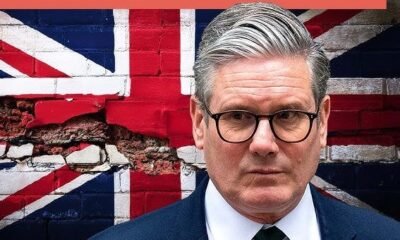Published
9 months agoon

On January 20, 2025, Donald Trump issued an executive order titled “Defending Women from Gender Ideology Extremism and Restoring Biological Truth to the Federal Government.”
This order mandates that federal agencies recognize only two genders—male and female—based on biological sex determined at birth.
So what does it imply?
The sweeping directive eliminates federal funding for programs that promote gender identity concepts and dissolves the White House Gender Policy Council. For many, this order signals a rollback of hard-won rights and recognition for transgender and nonbinary individuals, sparking debates about whether America is regressing into a less inclusive era.
The Impact on “Other Genders”
The executive order has significant implications for transgender and nonbinary individuals. By mandating policies that adhere strictly to binary definitions of gender, the federal government essentially invalidates the identities of those who fall outside these parameters. Identification documents, access to gender-specific facilities, and healthcare provisions—areas where progress has been painstakingly made—could be reversed.
This move not only disregards the lived realities of millions of Americans but also risks exposing them to greater societal and institutional discrimination. For transgender individuals, who already face disproportionate rates of violence, unemployment, and healthcare disparities, the order compounds their vulnerability. It also raises questions about whether state and local governments will follow suit, further narrowing the spaces where inclusivity can thrive.
What About Teens Who Have Come Out?
The impact on teenagers who have come out as transgender or nonbinary could be devastating.
Adolescence is already a challenging period, and for those struggling with their gender identity, societal acceptance plays a crucial role in their mental health and well-being. This executive order could fuel stigma and discrimination, making schools, public spaces, and even homes unsafe for these teens.
Research shows that LGBTQ+ youth are significantly more likely to experience bullying, harassment, and mental health struggles compared to their cisgender peers. Policies that delegitimize their identities only aggravate these issues, leading to increased rates of anxiety, depression, and even suicide.
Therefore, by all accounts, by rolling back protections and promoting a culture of exclusion, the federal government risks undoing years of progress in creating safe and affirming environments for LGBTQ+ youth.

Is Trump Reviving the Fear of the 70s and 80s?
This order inadvertently echoes a grim chapter of history.
In the 1970s and 80s, societal norms and government policies forced LGBTQ+ individuals to live in secrecy, fearing public perception, violence, and relentless teasing. The lack of recognition and acceptance often led to mental health crises and social isolation. By erasing the legitimacy of nonbinary and transgender identities, this executive order risks reviving an era where fear dictated lives and pushed individuals into the shadows.
The parallels are unsettling. Back then, coming out was an act of bravery fraught with risks. Today, the progress made over decades—in legal protections, social acceptance, and representation—is under threat.
Is This the Right Path Forward?
Those in favor of the executive order argue that it restores clarity and biological integrity to federal policies, claiming it protects women’s spaces and opportunities. However, critics contend that this rationale is a thin veil for discrimination. Gender identity is a deeply personal and multifaceted aspect of human existence, one that cannot be reduced to mere biological markers. By codifying such a reductive perspective, the Trump government risks alienating and marginalizing a significant portion of its population.
Moreover, the move is likely to have broader social ramifications. The erasure of nonbinary and transgender identities from federal recognition sends a message that these identities are less valid, emboldening those who seek to oppress or exclude individuals who do not conform to traditional gender norms. Therefore, it is not just a policy change; it is a cultural regression.
Historical Parallels. A Return to the Dark Ages?
This is not the first time in history that governments have attempted to legislate gender conformity. Throughout the 20th century, many nations criminalized or stigmatized expressions of gender and sexual identity that deviated from the norm.
These historical precedents illustrate the grim consequences of erasing or oppressing marginalized identities. Such actions not only fail to eliminate diversity but also drive it underground, in an environments of fear, secrecy, and shame.

A Step Backward?
By enforcing binary gender norms, this executive order raises uncomfortable questions about America’s commitment to progress and inclusion. Are we retreating to a time when individuals had to hide who they were to survive? Have we learned nothing from history’s mistakes?
America has long prided itself on being a beacon of freedom and individuality. However, this order challenges that notion, forcing many to reconsider whether it is truly upholding the ideals of liberty and justice for all. Policies that diminish the rights of some do not protect others; they create a society where the marginalized are further disenfranchised.
The Final Words
The executive order is likely to face legal challenges and widespread public dissent. Civil rights organizations, LGBTQ+ advocacy groups, and progressive leaders are expected to mobilize against it, arguing that it violates constitutional protections of equality and liberty. However, the damage it inflicts—both practically and symbolically—may be difficult to undo.
In a world increasingly aware of the spectrum of human identity, policies that enforce outdated and rigid definitions feel not only regressive but also deeply out of touch. America stands at a crossroads, will it move forward with compassion and inclusivity, or will it cling to narrow ideologies that divide and exclude?
The long road to fight for recognition and equality is far from over and as history has shown us that the arc of justice is long, but it bends toward progress—provided we have the courage to stand up and fight for it.


Taiwan’s ‘Historic’ TSMC Deal, A Win Or The End Of Its ‘Silicon Shield’ As China Threatens? A Jittery Taiwan Watches Trump’s Moves On Ukraine, Wondering, Could We Be Next?


America And China’s Thirst For Gold In 2025 Is Draining Other Countries’ Reserves; Here’s Why?


Germany’s Friedrich Merz’s Big Balancing Act—Trump, Borders & Europe’s Future. Can He Deliver?


United Kingdom To Unleash Its ‘Harshest’ Sanctions On Russia Yet—But Will They Bite? How Trouble Is Brewing For Keir Starmer At Home. Shamed For Volunteering British Troops In Ukraine


How It’s Not Trump But Vladimir Putin That Europe Is Stinging From: Trump’s U-Turn On Europe, Russia’s Strong Supply Chain—A Formidable Opponent!


Is Ukraine Now Stuck In The US-Russia Ecosystem? Could Zelensky Have Made A Deal To Stop The War, Is Trump Right?
